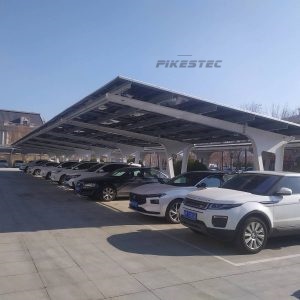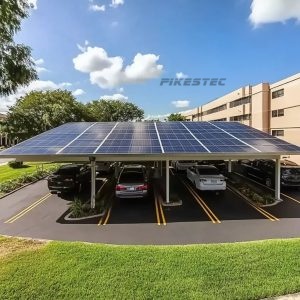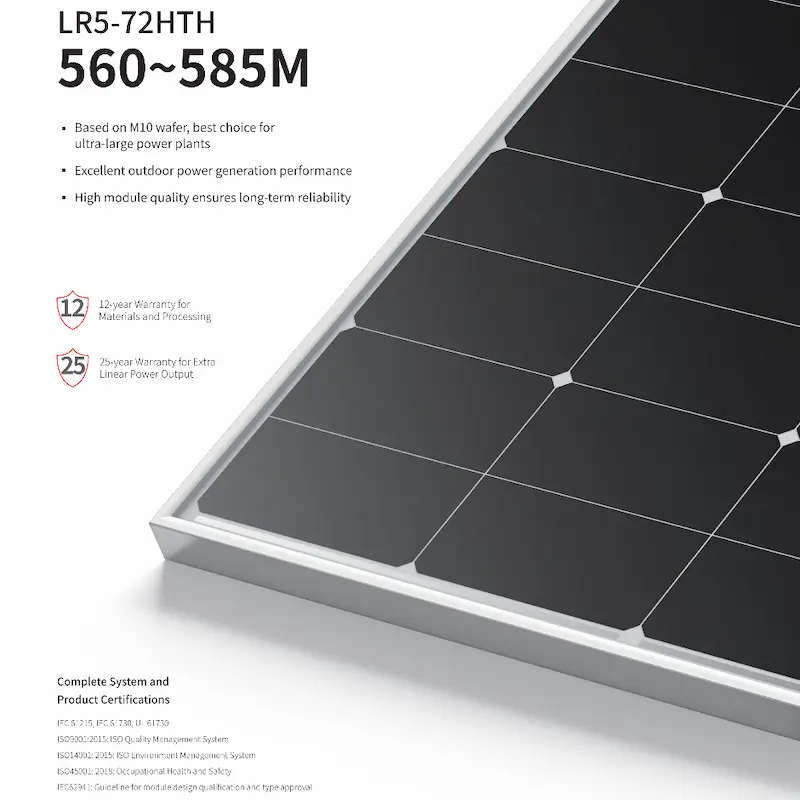How To Build a Residential Solar Carport
Wondering if a residential solar carport is right for you?
These practical, multi-purpose, and inexpensive structures can benefit your home in numerous ways. Beyond simply providing your vehicle with a dry, shady place to park, they can significantly contribute to reducing your monthly electricity bill. Solar carports are designed to maximize the use of available space by integrating photovoltaic (PV) panels into the canopy structure. This dual-function design ensures that while your car is protected from the elements, the panels are efficiently capturing sunlight and converting it into usable electricity.
By generating renewable energy, solar carports help lower your reliance on grid electricity, which can lead to substantial savings over time. The electricity produced can be used to power your home or charge electric vehicles (EVs), further enhancing energy efficiency and reducing your carbon footprint. Additionally, the shade provided by the carport can help keep your vehicle cooler, reducing the need for air conditioning when you start driving, which can improve fuel efficiency and extend the life of your car’s interior.

Moreover, solar carports add value to your property by improving its aesthetic appeal and functionality. They can be customized to match the style of your home, enhancing curb appeal and potentially increasing property value. For those looking to invest in sustainable and cost-effective solutions, solar carports offer a versatile and beneficial option that combines practicality with environmental responsibility.
How Do Residential Solar Carports Work?
Utilizing renewable solar electricity offers a multitude of benefits. It is not only good for the environment, helping to reduce carbon emissions and combat climate change, but it is also advantageous for your wallet by lowering electricity bills and potentially increasing property value. However, finding the right place and enough space to mount your solar panels can pose a significant challenge, especially for those with limited roof space or ground area.
That’s where residential solar carports come in! These structures are an innovative and practical solution that combine the functionality of a traditional carport with the benefits of solar energy. An easy-to-build structure, solar carports protect your vehicle from the elements such as rain, snow, and harmful UV rays, while also serving as a platform for generating renewable energy to power your home.
The construction of a solar carport is very similar to that of a typical carport, making it a straightforward and cost-effective addition to your property. The primary difference lies in the integration of rigid solar panels into the canopy structure. These panels are designed to capture sunlight efficiently and convert it into electricity. By connecting the solar panels to a portable power station, you can store and distribute the generated electricity to power various appliances and devices in your home.

What Do You Intend To Use Your Solar Carport For?
Obviously, your solar carport makes a great place to park your vehicle and shelter it from the elements. However, what are you planning to use the solar-generated electricity from the PV panels to power? Deciding what you’ll power using the electricity you generate is crucial. It’s the only way to determine how much electricity your solar carport needs to produce.
Is your primary goal reducing your home’s electricity bills? If so, the first step is to calculate how much electricity your home uses. This involves reviewing your past utility bills to understand your average monthly consumption. Depending on the size of your home and your electricity usage, you might be able to generate all of your power using multiple solar panels. For example, a larger home with higher energy demands may require a more extensive array of solar panels to meet its needs, while a smaller, energy-efficient home might achieve full self-sufficiency with a modest number of panels.
Even if your residential solar power system only cuts down on your on-grid electricity consumption, it still provides a solid long-term return on investment. Reducing your reliance on grid electricity can lead to significant savings over time, especially as electricity rates continue to rise. Additionally, many regions offer incentives, tax credits, and rebates for installing solar systems, which can further offset the initial costs and shorten the payback period.
Beyond reducing your home’s electricity bills, you might also consider other applications for the solar-generated electricity. For instance, you could use it to charge electric vehicles (EVs), power outdoor lighting, or run specific appliances such as water heaters or air conditioners. Each of these applications can contribute to a more sustainable and energy-efficient lifestyle.
To determine the appropriate size and configuration of your solar carport, consult with a solar installer who can conduct a detailed energy audit of your home. They can help you assess your energy needs, recommend the right number of solar panels, and design a system that maximizes efficiency and cost-effectiveness. By carefully planning how you will use the electricity generated by your solar carport, you can ensure that your investment not only meets your current needs but also provides long-term benefits and savings.
Contact us
A carport solar mounting system is a versatile and sustainable solution that combines the functionality of a carport with the benefits of solar energy generation. It provides covered parking while generating renewable electricity, making it a valuable addition to both residential and commercial properties.




